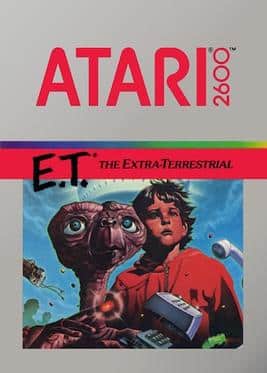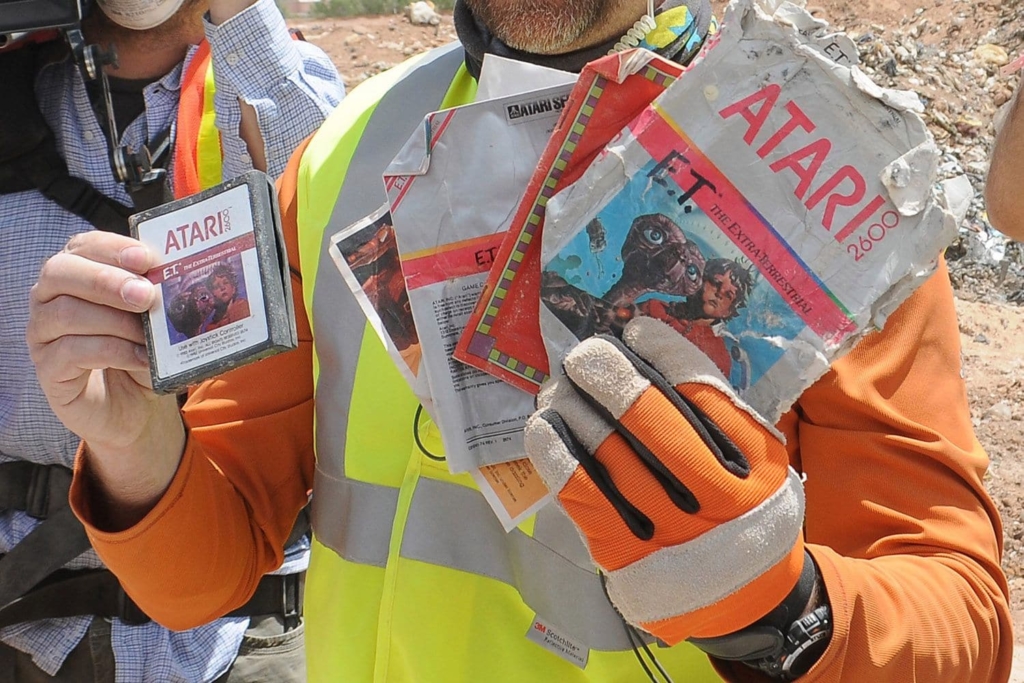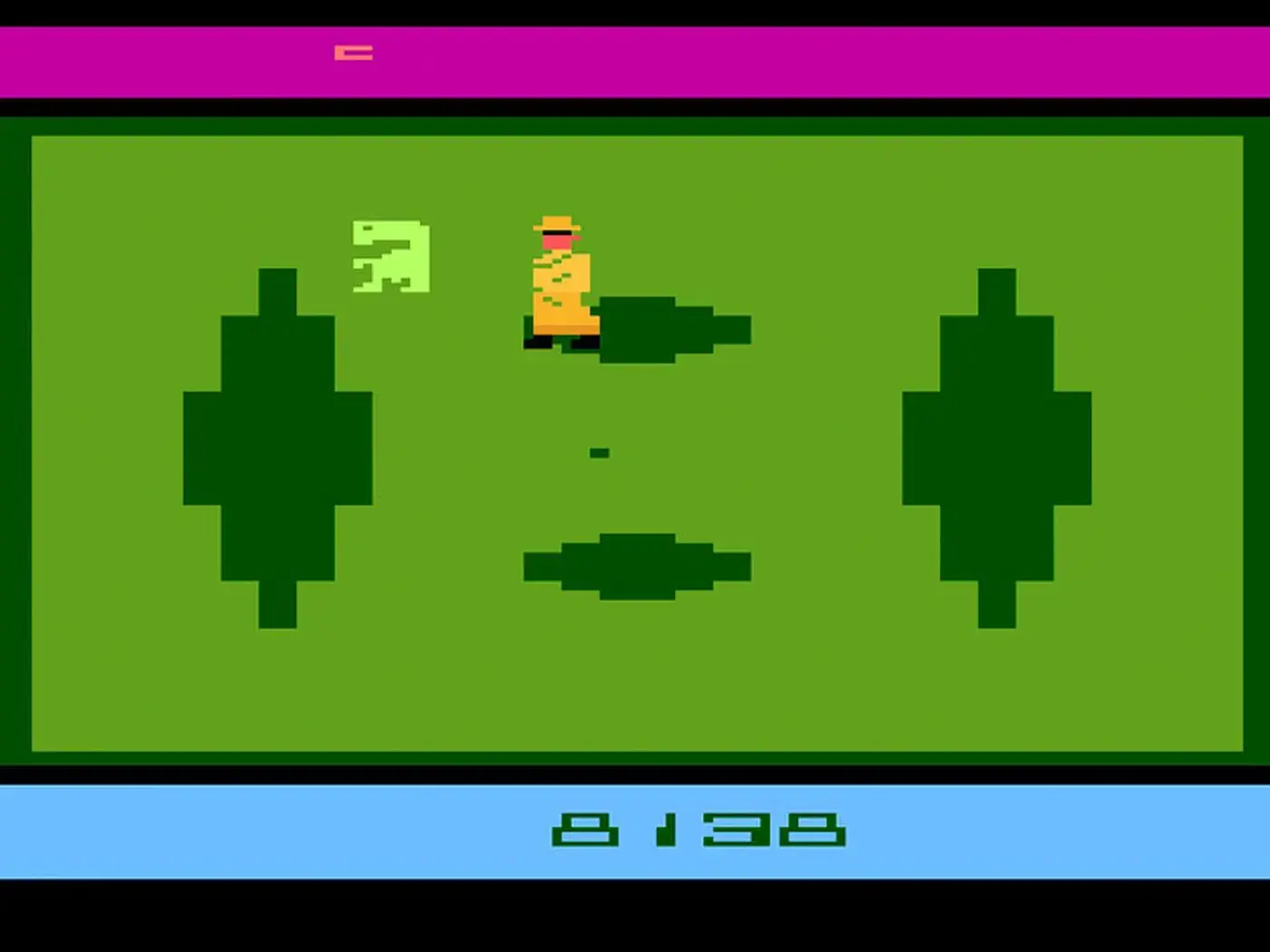History of the Game Engine: Special Mention – E.T. The Extra-Terrestrial Game (1982)
While most of the games released in the 1980s were pure gold, obviously the early days threw up a few stinkers too, but one, in particular, was a stinker which was marred with possible controversy, making it doubly a stinker. But it may have inadvertently earned itself a well-deserved place in gaming history as being the actual start point of game engines and the notion of shared code. On top of all that, its demise is now something of an urban legend, so sit back and enjoy the ballad of E.T. The Extra-Terrestrial.
E.T. The Extra-Terrestrial – the film – was released to emotion-ridden audiences in 1982. Both Universal Pictures and Stephen Spielberg were keen to capitalise on success by getting some kind of computer game going. People loved E.T. the movie, and people loved computer games; how could an E.T. computer game not be a success?
Popular Products
Warner Communications gaming arm – Atari – certainly thought that this was going to be commercial gold. In fact, Atari saw the game as such a potential that the company reportedly stumped up US$20–25 million for the rights to the core idea – and that’s around $53 – 66 million when adjusted for inflation to 2021, which is undeniably a serious amount of money. The amount that Atari was prepared to invest in the title demonstrated their belief in it. Still, they were also determined that the grass shouldn’t frow under it, and they wanted the game ready for the lucrative Christmas market. This meant that the coding had to be complete, and the game up and running by the end of August to allow for the production, marketing, and distribution enough time to capture the Christmas rush. A tall order indeed.
With Universal and Spielberg’s blessing, game designer Howard Scott Warshaw was engaged in designing the platform and delivering the game in the short timescale. Warshaw had been the team leader behind the commercially acclaimed Raiders of the Lost Ark game, so it seemed obvious to pick him to helm the new title. Atari had also planned an arcade game based on the E.T. property, but it was decided to shelve that particular notion given the short deadline available. Instead, the decision was made to concentrate on the console game first.

Warshaw had a pretty strong background in game development, having spent more than a year working on consecutive development schedules for games, including seven months working on the Yars’ Revenge – a weird title for the Atari 2600, based on a fly like creature – and six months on the well-received Raiders of the Lost Ark game. In fact, Yars’ Revenge became one of Atari’s best-selling titles, adding credence to Warshaw’s appointment as the designer and team lead on E.T. Crucially, Yars’ Revenge was based on a ported and licensed copy of a 1980’s game called Star Castle. Warshaw had plainly learned the lesson of using previous bits of code and fancying it up with a few graphics. Remember that point.
When he was offered the gig, Warshaw voiced concerns about the very tight timescales, being quoted as saying that it was possible “provided we (Warshaw and Atari CEO, Ray Kassar) reach the right arrangement”. He was reportedly sweetened up with a sizeable chunk of money, and an all-expenses-paid vacation to Hawaii in compensation as well as being flown to the Warner Brothers Studios by private jet to actually meet with Stephen Spielberg.
Accepting the contract, Walshaw realised that he was on a very tight schedule, and probably had little time to spend any of the $200,000 that he was given as payment. The first thing that he did was to loosely storyboard the game and decide on the gameplay’s ultimate goal. He decided that, rather than some kind of shoot-’em-up that had no relation to the movie, he would have a task-orientated game where E.T. collected items to build an interstellar phone to, um, phone home. Jeopardy was introduced through a series of environmental hazards. All in all, a pretty uncomplicated game, but even simple ones need a fair bit of coding, in-house testing, modification and audience testing.
Fresh In
Depending upon complexity, modern games – like those of the 21st century – take years of development, but even the most undemanding required many months of coding and development. So, when Warshaw was called in around late July 1982 to be given the project, with a perceived timescale of a little over a month to complete, it was a big ask. A big ask indeed, but Warshaw believed it was possible.
Now, short product development times invariably mean cut corners. We’re not going so far as to say that Warshaw reused parts of code from previous games, like Yars’ Revenge, given the short timescales, the need to deliver, and the big bucks being bandied around, you’d have to be nuts not to consider doing it.
By whatever means, Warshaw managed to deliver a workable game to Atari in the timescale, but the company decided to forego audience testing and just ramp up production for the fast-approaching Christmas sales period.
The game hit the market to initially encouraging reviews, and some critics actually liked it. It appeared among the top four on Billboard magazine’s “Top 15 Video Games” sales list in December 1982 and January 1983. However, initial jubilation quickly subsided as people played it more, and it was quickly branded as “convoluted and inane”, and designed with very small children in mind. It’s difficult to come back from those kinds of cutting remarks.
Within a few months, E.T. The Extra-Terrestrial was universally panned and is often cited as the most awful title in gaming history. Critics of the time hated the low-poly graphics and repetitive gameplay that generally saw E.T. falling into pits to be rescued by Eliot, only to fall in a pit again. E.T.’s task was to collect three parts that made up an interstellar phone and to avoid falling into pits. He wasn’t particularly good at either. The poorly thought-out collision physics in the engine meant that as soon as E.T.s sprite touched a designated pit, he fell into it, so game players had to tiptoe around the environment. But the game’s blocky nature meant that precision simply wasn’t possible, and so into the pits it was for poor E.T.
In fact, so bad was it that it led directly to Atari’s demise as a company and hastened on the computer-game crash of 1983, which saw the business stock of many computer companies plummet. The game eventually sold around 1.5 million units, but with over-production creating around 4 million copies, between 2.5 and 3.5 million cartridges went unsold. It was stated that the sales generally went to parents and grandparents who bought it for their gaming offspring on word-of-mouth recommendations rather than knowledge of computer gaming. Kids of Christmas 1982 preferred the vastly superior Pitfall from Activision, which was also available for the Atari 2600.

Atari, in its death throes, decided to literally bury the evidence since it was worthless, and an estimated 730,000 copies of the game cartridge were buried in landfill at Alamogordo, New Mexico. While this was for a long time thought to be an urban legend, it was confirmed at the time by James Heller, a former Atari manager who was in charge of the burial. We might have scoffed at the story were it not for the fact that several copies of the game were, ahem, unearthed. A 2014 excavation of the site quickly turned up a huge number of Atari game cartridges of various titles, including the E.T. The Extra-Terrestrial game, some of which can be seen in the Smithsonian Museum.
The financial impact of E.T.’s failure on Atari was enormous, and the company never really recovered. In a vain attempt to recoup some of its losses, the company started to licence popular arcade games for the Atari consoles, but it wasn’t enough to prevent the inevitable slide into dissolution. However, the potential for the defunct company’s code to find its way into new titles was high, and Atari’s demise may have been the first step in the development of game engines.
Popular Products
Whether Warshaw did inadvertently start the notion of game engines and common coding licensing is a bit of a moot point. He has never said that he did use code from any other game, but he never said that he didn’t either. Given Occam’s Razor, and the simplest answer usually being the right one, developing a game from the ground up in just over a month is pretty unlikely, so our money is firmly on the reused code scenario.
Warshaw created a loser, but others working with him may well have learned from the notion of borrowed code, and if it wasn’t a reality at the time, it wouldn’t be many more years before it would be. And the end result has made us all winners!

